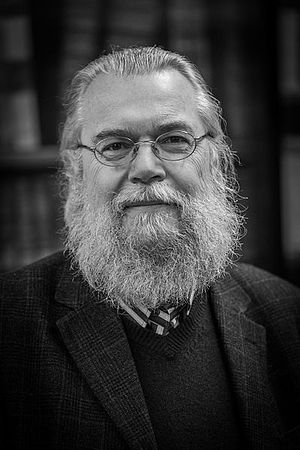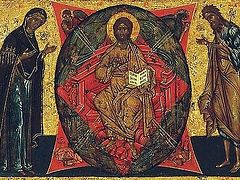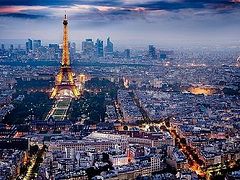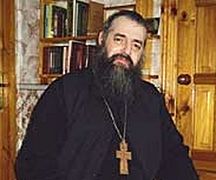Review by Jean-Claude Larchet of Guillaume Cuchet’s book Comment notre monde a cessé d’être chrétien. Anatomie d’un effondrement [How our world stopped being Christian: anatomy of a collapse] (Paris: Seuil, 2018), 276 pp.
For half a century, many authors have noted the spectacular decadence of Catholicism in France and more widely in Europe, and have worried about it: Louis Bouyer in The Decomposition of Catholicism(1968), Serge Bonnet in À hue et à dia. The Avatars of Clericalism in the Fifth Republic (1973), Michel de Certeau and Jean-Marie Domenach in Christianity Exploded (1974), Paul Vigneron in A History of the Crises of the Contemporary French Clergy (1976), Jean Delumeau in Will Christianity die? (1977), Emile Poulat in The Post-Christian Era (1994), Bishop Simon in Towards a Pagan France? (1999), Denis Pelletier in The Catholic Crisis (2002), Danièle Hervieu-Léger, Catholicism: The End of a World (2003), Yves-Marie Hilaire in Will the Churches Disappear? (2004), Denis Pelletier, in The Catholic Crisis: Religion, Society, Politics in France (1965–1978) (2005), Emmanuel Todd and Hervé Le Bras in The French Mystery (2013), and Yvon Tranvouez in The Decomposition of Western Christianity (2013).
In this book — the title of which plays on that of Paul Veyne’s book When Our World Became Christian, yet announces the inversion of the process whose beginnings the latter analysed — Guillaume Cuchet, professor of contemporary history at the University of Paris-Est Créteil who specialises in the history of Catholicism, proposes to define the moment when this decadence began and to determine the reasons for it. One of the main scientific tools he uses is statistical analysis, and one of the objective criteria he considers is the rate of regular Sunday church attendance among the French population, which has declined from 27% in 1952 to 1.8% in 2017. This criterion can be challenged because, according to a recent article in the French Catholic newspaper La Croix, one can be a “practicing” Catholic with other commitments. True, in the absence of such a Sunday practice, a Christian culture can last for a while; but the loss of contact with liturgical life can only lead to its gradual weakening and eventual disappearance.
The first third of the book defines adherence to Catholicism as it appears from a mass of statistical data compiled by the clergy between 1945 and 1965, and in particular statistics carefully and regularly established over a wider period (1880–1965) by Canon Boulard, a sociologist and author of the four-volume work Materials for the Religious History of the French People, 19th–20th Centuries.
According to Cuchet, it is in the 1960s — more precisely in 1965 — that the rupture inaugurating the process of Catholic decadence in France can be dated. This break coincides with the Second Vatican Council, which is paradoxical, since this council was designed, by those who organised it, as an aggiornamento to vivify a Catholicism confronted with the modern world. Yet as the author, after examining various hypotheses, points out, “we do not see what other event could have generated such a reaction. By its mere existence, to the extent that it suddenly made possible the reform of the old norms, the council was enough to shake them, especially since the liturgical reform which concerned the most visible part of religion for most people began to be implemented as early as 1964."
In the second half of his book, the author precisely analyses the causes, related to the council, of the rupture and process of decadence which continues today throughout the world.
The council caused the faithful to lose their bearings. The conciliar text published in 1965 on religious freedom, Dignitatis humanae, appeared “as a kind of unofficial authorisation to rely on one’s own judgment with regard to beliefs, behaviour, and practice, which contrasted strongly with the former system.” This occasioned Father Louis Bouyer’s sad remark: “Nobody believes anymore; everyone does only what they want.”
In the area of piety, notes Cruchet, aspects of the liturgical reform which might appear secondary, but which were not at all on the psychological and anthropological level, played an important role. This included the abandonment of Latin, the reception of Communion in the hand, and the relativisation of old ties. To this can be added the criticisms of solemn communion which increased starting in 1960 and especially in 1965, as well as the new pastoral practices around baptism (from 1966) and marriage (from 1969–1970), which tended to increase the level of access to the sacraments by requiring more preparation and personal investment on the part of those wishing to receive them.
In the area of beliefs, the very fact of there being a change in discourse was what mattered. Variation in official teachings made skeptics out of the humble faithful, who concluded that if the institution had been “mistaken” yesterday in declaring as immutable what had ceased to be, one could not be assured that the same would not occur in the future. A whole series of old “truths” suddenly fell into oblivion, as if the clergy themselves had ceased to believe in them or did not know what to say about them after having spoken of them for so long as something essential.
Another area in which this situation was able to destabilise the faithful, notes the author, is “that of the image of the Church, its hierarchical structure and the priesthood. The ‘Catholic crisis’ of the years 1965–1978 was at first a crisis of the clergy and Catholic militants. The abandonment of the cassock (from 1962) and the religious habit, the politicisation (towards the left) of the clergy, the departure of priests, religious and nuns, appeared to many as a real ‘betrayal of the clergy’ without equivalent since the French Revolution, which had had the same destabilising effects.”
Furthermore, “the council paved the way for what might be called ‘a collective exit from the obligatory practice on pain of mortal sin,’ which occupied a central place in ancient Catholicism. [...] This ancient culture of obligatory practice was mainly expressed in the area of the ‘commandments of the Church,’ which children learned by heart at catechism and the guarding of which had to be verified during the examination of conscience when preparing for confession. This also included the duty of keeping Sundays and feast days holy, of confessing sins, and of receiving Holy Communion at least once a year; [and] of fasting on Fridays, on the eves of great feasts, and during the so-called "Four Seasons" of Lenten periods. All these requirements were relaxed to the point of disappearing with the exception of Communion, which became systematic and was received without any preparation, since confession and fasting had practically disappeared. The easing of the Eucharistic fast, however, had been accomplished in several preliminary stages: in 1953, Pius XII, while maintaining the obligation of fasting from midnight on before communion, decided that the intake of water would no longer break it; in 1957, the motu proprio entitled Sacram communionem reduced fasting to three hours for solid food and one hour for liquids; in 1964, Paul VI decreed that one hour sufficed in both cases, which meant in practice the disappearance of the Eucharistic fast, since one hour is the time of travel to church and the duration of the Mass before communion.
During this conciliar and post-conciliar period, “it is striking," notes the author, “to see to what extent the clergy voluntarily removed the old system of norms which they had so much difficulty putting in place,” inevitably creating in the people the feeling that one had “changed their religion,” and provoking amongst some of them an impression of generalised relativism.
The author dedicates two whole chapters to the causes of decadence which seem to him fundamental: the crisis of the sacrament of penance and the crisis of the preaching on the Last Things.
1) According to Cuchet, “The crisis of confession is one of the most revealing and striking aspects of the ‘Catholic crisis’ of the years 1965–1978.” “The decline of confession is in itself a major sociological and spiritual fact that historians and sociologists probably have not taken full measure of: nothing less, in fact, than the overwhelming transformation by massive abandonment, in the space of only a few years, of a practice which over a long period of time had profoundly shaped Catholic attitudes. In 1952, 51% of Catholic adults admitted going to confess at least once a year (at Easter, it had been obligatory since the promulgation of Canon 21 of the Fourth Lateran Council of 1215); in 1974, this had decreased to only 29%, and in 1983, to 14%. According to the author, the breaking point is around 1965–1966, when confession ceased to be presented as the “sacrament of penance,” and began to be presented as the “sacrament of reconciliation.” This went hand in hand with the following:
- the end of the aforementioned “obligatory practice” and a decriminalisation of the abstention from religious practice, previously considered as a sin inasmuch as this was a breaking with the commandments of the Church, which were presented as duties one was compelled to fulfil;
- a loss of the sense of sin in the conscience of many faithful, but also among the clergy who now feared to evoke this notion, as well as that of the Last Things. The author notes in this regard: “The clergy have quite abruptly stopped speaking on all these delicate subjects, as if they had stopped believing in them themselves, while at the same time a vision of a Rousseau kind of God carried the day: the “Love God” (and no longer merely “God of love”) of the years 1960–1970.” As one old Breton peasant summarised in the early 1970s in an interview with the sociologist Fañch Élégoët, “The priests have paved the road to heaven.” Once narrow and steep, it was now a highway used by almost everyone. With such a road at hand, if there were no longer any sin or hell, or at least some serious sin that could deprive you of heaven, the usefulness of confession, in its traditional definition, was actually less obvious”;
- a disconnect between confession and communion. “In the old system, we confessed more than we communed, and confession was first perceived as a sort of purification ritual conditioning access to the Eucharist.” The development of frequent communion, accompanied by the loss of a sense of sin, as well as the idea among some clergy — influenced by psychoanalysis — that it was necessary to liberate the faithful from feeling guilty and to “free them from the confessional” had as a consequence that the faithful were now invited to communion without needing to confess. Communion then became trivialised, while the very possibility of confession practically did not exist any more, the regular individual confessions being replaced, starting in 1974, by “penitential ceremonies” celebrated once a year before Easter. At these gatherings, the faithful did not confess anything (the author calls these ceremonies “forms of penance without confession”) but received a collective absolution after listening to a vague speech in which the notion of sin was most often bypassed. And when the possibility of confessing remained in some parishes or was later restored, “the faithful did not know very well how to confess, or even if it was still useful to do so.”
2) The last chapter is devoted to a cause of decadence which seems equally fundamental to the author: the crisis of the preaching on the “Last Things.” In the chapter’s title, the author wonders whether that might not mean in the background “the end of salvation,” and he notes that in ancient catechisms and theological treatises, an important place was given to death, judgment, and the two final destinations of the hereafter, hell and paradise. Worried as early as December 1966 at seeing them disappear from teaching and preaching, the bishops of France noted: “Original sin [...], as well as the Last Things and Judgment, are points of Catholic doctrine directly related to salvation in Jesus Christ and whose presentation to the faithful actually makes it difficult for many priests to teach them. We do not know how to talk about them.” Shortly before this, Cardinal Ottaviani, prefect of the Congregation for the Doctrine of the Faith, had noted that original sin had almost completely disappeared from contemporary preaching. Cuchet remarks that it was not only a pastoral and pedagogical problem of presenting dogma, but also that “in reality, it was indeed a problem of faith and doctrine, and a discomfort shared between the clergy and the faithful. Everything happened as if, quite suddenly, at the end of a whole work of underground preparation, whole parts of the ancient doctrine considered hitherto as being essential, such as judgment, hell, purgatory, the devil, had become unbelievable for the faithful and unthinkable for theologians.” The author situates this crisis (although it had had some warning signs for some time) in the 1960s, along with the crisis of confession, noting that the former is closely related to the latter: “The collapse of the practice of confession follows an identical chronology, in particular the virtual disappearance in a few years, or even a few months, of the group that once was so common among those who confessed frequently. The relationship is directly, if not exclusively, linked with the erasure of the notion of mortal sin (in the sense of sin making one liable to damnation). But it also had implications on other sacraments related to the Last Things. In the new ritual of baptism, the exorcisms were considerably reduced (because it did not seem desirable to insist on the role of Satan, in whose existence some clergy no longer believed and who seemed to belong to a mythology from which the faithful, judged to be naive, were to be freed); there was also a clear mocking of original sin, from which [baptism] was supposed to deliver so as to secure eternal life.”
As far as baptism is concerned, another reform was to cause the disaffection of many of the faithful: beginning in December 1965, “a new pastoral ministry of baptism, whose primary concern until now was to have children baptised as soon as possible, on the contrary, [strove] on the contrary to put off the date so as to involve the parents more in the preparation.” It should be added that a certain number of priests went so far as to discourage the baptism of children on the pretext that it must be a free, voluntary, and fully conscious act, and advocated postponing the discussion of baptism until they had reached adolescence.
Approaching his conclusion, the author emphasises again the catastrophic effects of the crisis of the 1960s on the dogmatic conscience of the faithful, which in a way had become Protestantised: “The consecration of the freedom of conscience by the council has often been interpreted in the Church, unexpectedly at first, as a new freedom of the Catholic conscience, implicitly allowing it to distinguish between dogmas and practices of obligation. The very notion of dogma (as obligatory belief in conscience) then became problematic. This major decision of the council, coupled with the notion of a “hierarchy” of truths, seems to have operated in the minds of many as a kind of official decriminalisation of the “DIY believer” which contrasted greatly with the previous system, where the truths of the faith were to be taken as a whole and not by pick-and-choose. It was to be expected that the most disagreeable of these [tenets], or those most counter-intuitive to common sense, would pay the price, and this did not fail to occur.”
Whatever the external factors might have been that could have played a role in the collapse of Catholicism (modern attitudes, social pressure, etc.), the internal factors are what appear to be decisive according to the author of this book.
Catholicism itself bears a heavy responsibility in the dechristianisation of France (and more broadly of Europe, because an analysis made for other countries would lead to identical conclusions). The aggiornamento realised by the Second Vatican Council, and which had proposed to face the challenges of the modern world, did nothing but adapt itself to the latter; thinking to bring the world to its side, it ended up giving in to the world, and despite wanting to be heard in the secular sphere, Catholicism has instead become secularised. Fearing to assert its identity, it became relativised to the point that a large number of faithful no longer found in it the signposts to which they had been accustomed or that they expected, and no longer saw the point of seeking in Catholicism what the world already offered them in a less roundabout way.
The Catholic authorities seek to minimise the collapse described in this book by various arguments (a large number of French remain Catholic and have their children baptised; religious practice is measured by commitments other than Mass attendance; quality has replaced quantity, etc.). Yet they struggle to convince. John Paul II is often presented as having engineered a recovery from the excesses that followed Vatican II, but it must be noted that Sunday religious observance in France declined from 14% at the time of his election to 5% at the time of his death in 2005. If it is true that living communities existing in cities can provide a false example (as was also the case with the few churches open during the Communist period in the Eastern Bloc, crowded on account of others being closed), as well as the spectacular gathering of young people during the World Youth Days, the French countryside nevertheless shows the reality of a dramatic desertification: the multiplication of disused churches (that is to say, churches no longer acting as place of worship); priests having the care of twenty or even thirty parishes and celebrating every Sunday a “regional” Mass for a small group of faithful, mostly elderly and sometimes coming from several dozen kilometres away; the disappearance of burials celebrated by priests due to the lack of available celebrants; the lack of contact between priests and faithful because of their mutual distance and the unavailability of the former, who are more occupied with clerical meetings than with pastoral visits ...
The sad evolution of the post-conciliar Catholic Church, as described in Cuchet’s book, should serve as a warning to the Orthodox bishops and theologians who have dreamt and still dream of calling for a “Great Orthodox Council” similar to that by which the Catholic Church wanted to accomplish its aggiornamento, but whose main effect was to provoke its internal disintegration and the dramatic haemorrhage of a large number of its faithful.
Orthodox Ethos
Used with permission





We (northern europeans) had to create our own thing (masonry) in order to counter the papists. Papacy is a political party in disquise as a church which holds to an idea that people from the equator are a master race and destined to rule the world. You know the evil that the papists have perpetrated in the East. Why do you then doubt the evil they have perpetrated in the west- entire nations enslaved to spain, men burned for translating the bible into the language of their own nation, etc. Do not be decieved by the western papists- remember Nevsky, the victims of catholic fascism in ww2, Constantinople, 1066, Peter the Eskimo, and countless carpathian martyrs!
Wrong title. The author actually describes how only world Catholicism ("Roman Catholicism") fell apart, not "Christians" as a whole.
But mainline Protestantism is Christian too, and has also been collapsing according to the Pew Research Institute, yet he does not address that issue.
And Russian Orthodox Christianity, at least in Russia, has been growing by leaps and bounds.
But he does provide a good analysis of the Vatican Council II disaster, and its consequences.
===============================
Europe is not America, but we have as christians a common problem.